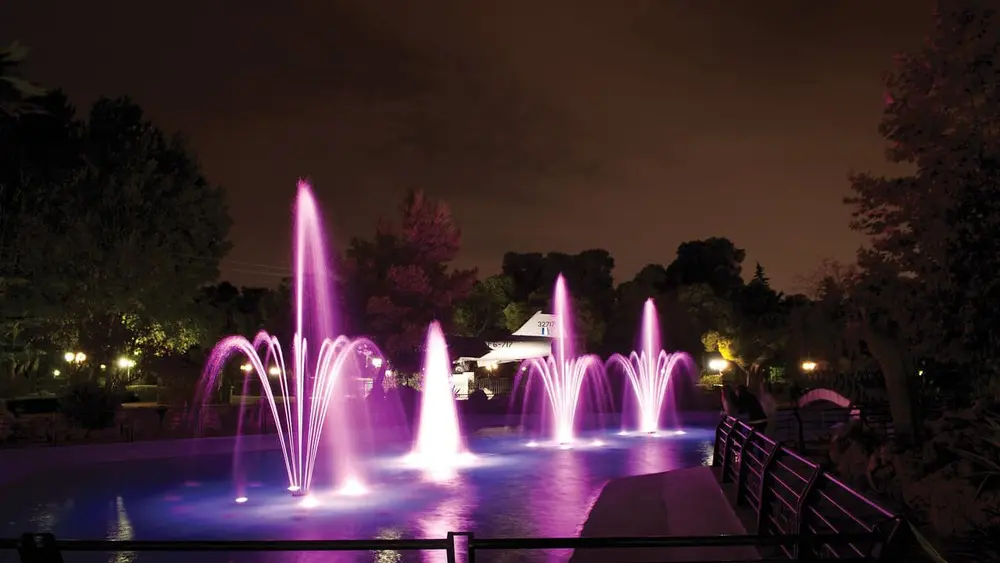
In fountain landscape design, creating aesthetically pleasing and functional outdoor spaces transcends the mere arrangement of flora and topography. Water fountains significantly enrich the sensory experience of outdoor spaces. Here, we’ll explore the practical considerations involved in designing fountains for gardens and parks, focusing on floating fountains.
This emphasis on floating fountains stems from their widespread popularity and versatility. With various sizes and water patterns available, they cater to different preferences and settings, seamlessly integrating into natural surroundings while enhancing outdoor spaces. As central features in public spaces, park fountains beckon visitors to pause and engage with their environment, offering intriguing visuals and soothing auditory cues.
Fountains for gardens and parks present landscape architects with versatile solutions for enhancing spatial dynamics and aesthetic appeal. Whether discreet installations in private gardens or elaborate constructions in public parks, floating fountains enable designers to tailor water features to the landscape, amplifying its intrinsic beauty while conveying sophistication and refinement.
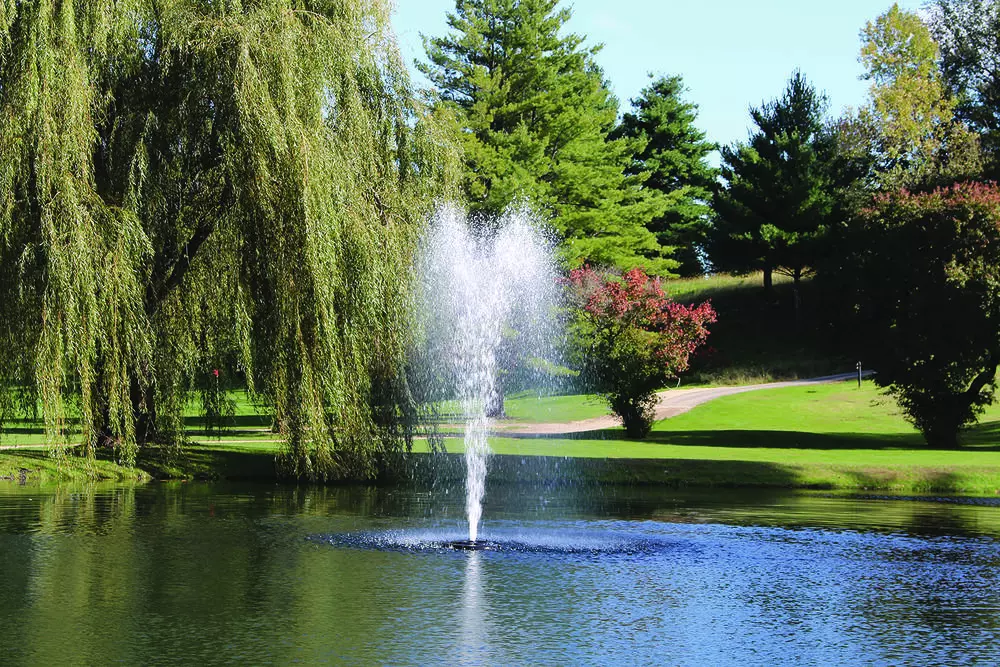
When it comes to designing domestic or municipal water features, many options exist to suit various preferences and practical needs. From tranquil backyard ponds to bustling urban fountains, the diversity of design choices ensures that every space can be enhanced with the beauty and functionality of water elements. Whether seeking a serene retreat or a vibrant urban oasis, the range of design options available allows for tailored solutions to complement any setting.
Vessel or basin fountains are perhaps the common fountain design. They feature a base or basin design that collects water, preventing splashing. They adorn urban parks and gardens with ornamental sculptures, offering aesthetic appeal and mitigating the urban heat island effect.
Waterfalls are also a popular feature; integrated into parks and urban areas, they utilize variations in terrain height to simulate natural cascades. Beyond their aesthetic allure, they produce soothing sounds and captivating visual spectacles, enhancing the ambience.
Meanwhile, dry-deck fountains, common in modern cities, feature multiple jets emerging from zero-depth pavements. These fountains create refreshing atmospheres, serve as meeting points, and offer playful interaction for children.
Water mirror fountains, installed at ground level, create motionless sheets of water, evoking elegance in gardens and parks. These striking features foster environments conducive to relaxation and contemplation.
Despite the many options, floating fountains are among the most popular fountains for gardens and green spaces. Their design, comprising a pump and fountain nozzle mounted on a molded plastic float anchored within a pond or lake, offers versatility and visual appeal. These fountains are particularly favored for their ability to seamlessly integrate into natural surroundings, complementing the flora and fauna present. They can cater to different preferences and settings with various sizes and water patterns available. Additionally, their resemblance to natural springs creates a refreshing and cooling ambience, making them an ideal choice for enhancing outdoor environments.
Floating fountains can also be conceived as large-scale watershows to be integrated into rivers or lakes, creating a meeting and entertainment space in which to admire animated water choreographies, such as the one installed on the river Tyne in the Newcastle Great Exhibition of the North.
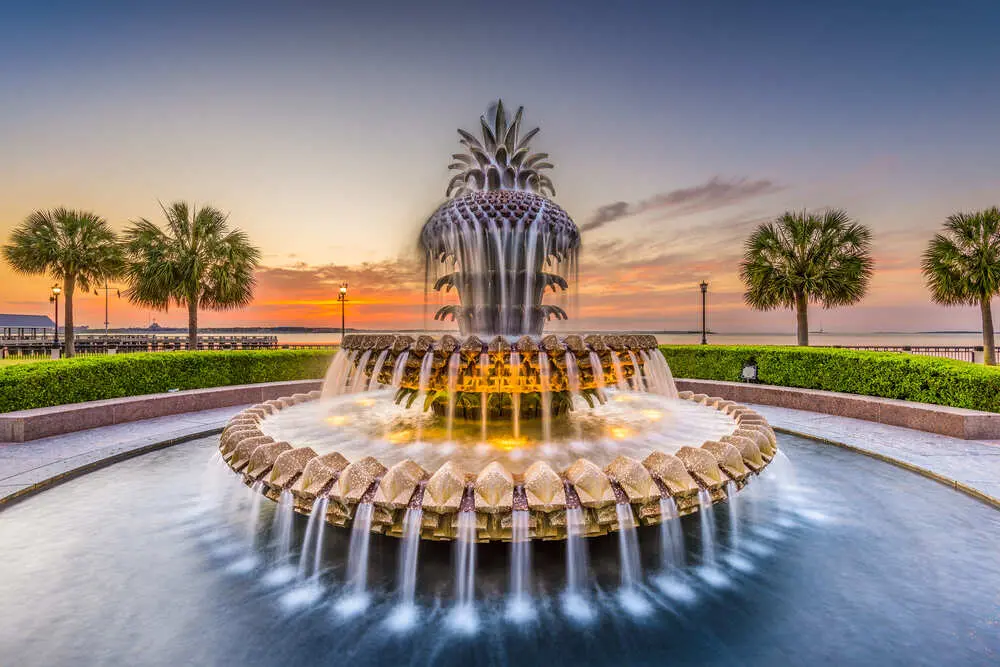
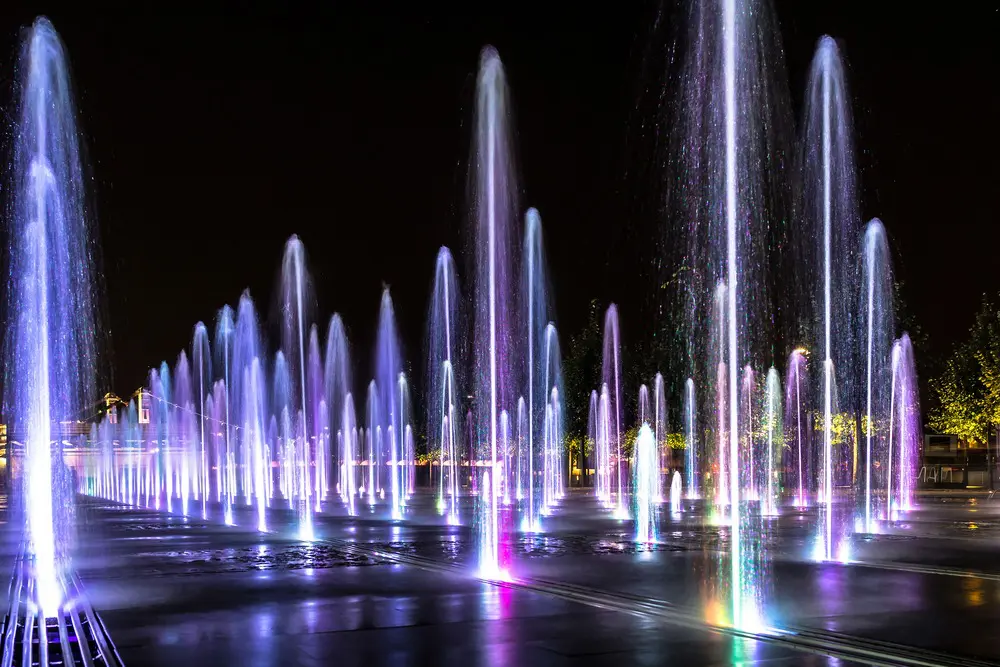
Ponds and lakes often hold a central position in the landscape of parks, gardens, and urban oases. Several crucial factors warrant consideration when installing floating fountains for such water bodies. The size of the pond significantly influences the appropriate fountain size. Overly large fountains can dominate small ponds, creating a cluttered appearance, while small fountains may fail to make a visual impact in larger bodies of water.
Additionally, the size of the fountain dictates the patterns it will create. Mismatched sizes could lead to excessive water dispersion, potentially depleting the pond. Thus, prudent evaluation of pond size is essential in selecting appropriate fountains for gardens or parks.
Furthermore, the operation of garden ponds and lake fountains necessitates a nearby power source. Ensuring the presence of an accessible electrical outlet is imperative; if unavailable, consulting an electrician for installation may be necessary. Additionally, attention must be paid to voltage, phase requirements, and proper grounding to mitigate any electrical hazards.
A diverse selection of floating fountain types is available, each offering distinct features and advantages. Varieties range from those projecting water high into the air to those with a more subdued flow. Whether seeking a refined focal point or a dramatic spectacle, understanding the desired effect is paramount in selecting the most suitable fountain type. The choice of fountain pattern necessitates consideration of three operational factors: flow, pattern size, and power consumption. Understanding the interplay between these factors is essential in optimizing fountain performance and ensuring efficient operation.
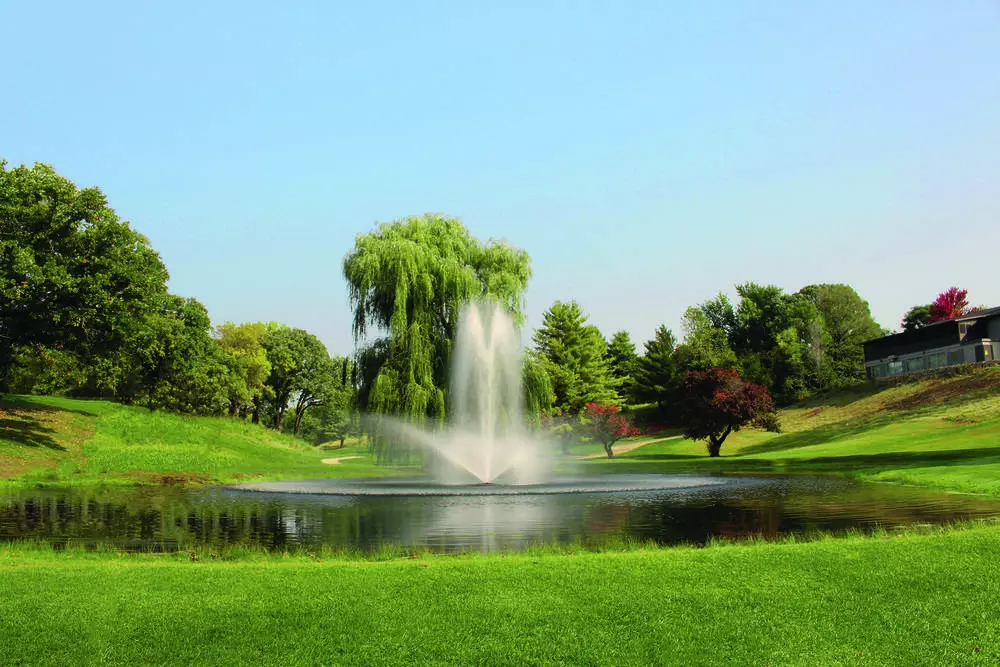
Floating fountains for gardens and parks should prioritize sustainability, ease of maintenance alongside aesthetic appeal. Advancements in installation techniques ensure minimal disruption to the surrounding environment, promoting long-term enjoyment of these water features with minimal environmental impact. Moreover, modern park fountains are engineered for energy efficiency, minimizing water and power consumption.
Beyond their aesthetic qualities, floating fountains in ponds or lakes serve a practical function by providing aeration. This continual water oxygenation is crucial for sustaining aquatic life, preventing fish mortality, and inhibiting algae growth. By maintaining optimal oxygen levels, these fountains also mitigate odors, regulate water temperature, and improve water clarity, contributing to a healthier aquatic ecosystem.
In terms of upkeep, regular maintenance is essential to ensure the longevity and efficient operation of fountains. Tasks include:
- Inspecting for clogs
- Replacing sacrificial anodes
- Assessing power cords for damage
- Periodic oil and seal changes (typically every three years).
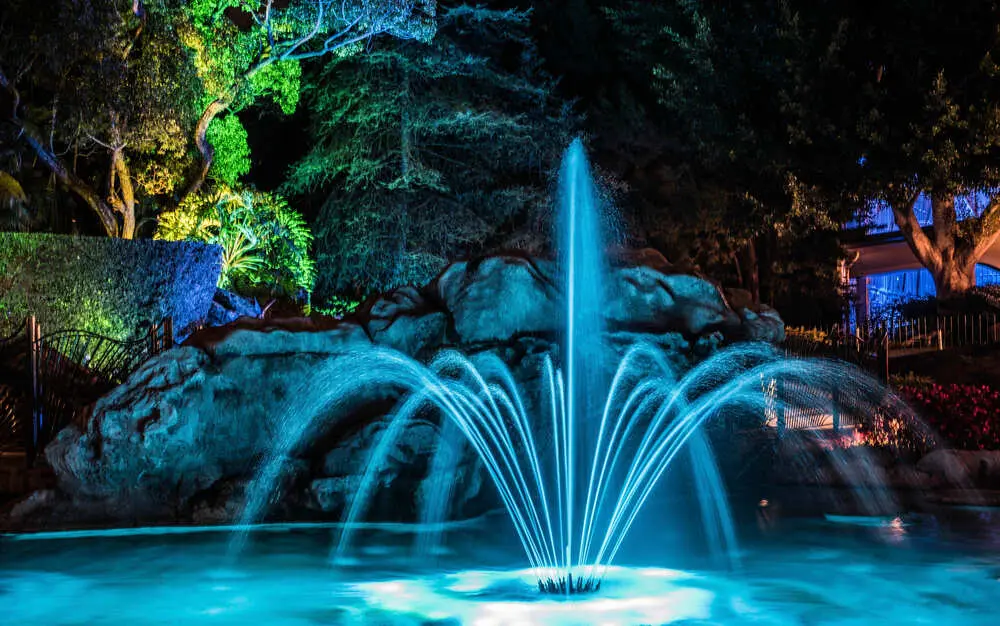
Floating fountains for gardens, parks, and backyards offer an ideal canvas for integrating lighting systems, enhancing their allure during nighttime. These systems, powered by high-performance LEDs and advanced optics, add interest to evening fountain displays.
Modern fountain lighting designs present long-lasting, user-friendly solutions, effectively illuminating various fountain types with every nozzle pattern included. Each distinct light fixture offers customizable colors, speeds, and brightness levels, allowing for dynamic visual effects tailored to any setting.
Beyond aesthetics, there are significant biological benefits to operating fountains throughout the night. During nighttime, oxygen levels in water bodies decrease as photosynthesis slows, leading to reduced oxygen production. Additionally, natural wind and wave action typically diminish during nighttime. Running aeration equipment, including fountains, helps maintain healthy oxygen levels, supporting aquatic life.
The integration of floating fountains into landscape design offers a seamless blend of natural elegance and practical functionality for gardens, parks, and backyards alike. These versatile features not only enhance the aesthetic appeal of outdoor spaces but also contribute to the sustainability and ease of maintenance.
From their tranquil presence during the day to the captivating allure illuminated by night, floating fountains bring a sense of harmony and vitality to their surroundings. With careful consideration of design elements and a commitment to upkeep, fountains for gardens and parks serve as enduring symbols of beauty, enhancing outdoor environments for generations to come.
